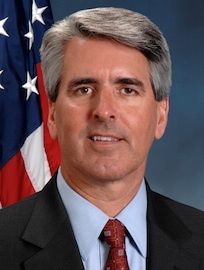This from Dave Stevens, President & CEO of the Mortgage Bankers Association:
Where We Are Today.
We are currently in the middle of a housing crisis. That’s right…I said it. Industry experts, economists and even consumer groups have predicted one would emerge, albeit this is not what they expected and it is certainly sooner than anticipated.

Yes, the word crisis is harsh and alarmist, but it accurately reflects the complete void of focus on housing as an opportunity by Washington policy makers, including the actions of the regulators and enforcement officials that are narrowing the credit box. Fact – there is a shortage of affordable housing (both rental and owned) and the homeownership rate today is at its lowest point in over two decades. Today’s environment is not encouraging credit expansion. It’s forcing lenders to be overly conservative – ultimately failing entry-level homeowners on every front.
What’s the number one issue choking off access to affordable credit? Regulating through enforcement and it’s happening on a case-by-case basis. The guessing game for businesses to know if and when they may be penalized has produced the most defensive lending posture in years. This atmosphere of the unknown; this environment of fear and trepidation rather than an environment of constructive engagement and compliance have a steep cost. And we’re not just talking costs for compliance or production. We’re talking costs for any mistake, even a minor one that may have no bearing on the efficacy of the loan, making lenders even more conservative in lending. It’s impacting the willingness of lenders to take the risk even to some who would otherwise qualify for their dream to obtain a home. The regulatory environment is failing the very borrowers policymakers set out to protect – young families, thriving generations of new Americans, first time homebuyers; all the while driving up rental costs and homeownership lags and rental demand soars.
Lenders must have clearer guidance on the rules and a better understanding of what will constitute an enforcement action. We have made some progress working with regulators on issues such as rep and warrant, FHA defect taxonomy and the supplemental ratio, but it’s not nearly enough.
Some regulators appear to have an enforcement-first strategy, instead of providing clear rules and guidance – particularly regarding unfair, deceptive, or abusive acts or practices – UDAAP actions – which expose lenders to “regulation by enforcement action.” Lenders are being subjected to zero-tolerance policies, but don’t have the necessary guidance to comply with some regulations. Refusal to clarify the rules in writing by the CFPB leaves lenders in a position for massive penalties for minor mistakes.
The CFPB should be applauded for granting an enforcement delay on the TILA/RESPA Integration Disclosure rule (TRID). With the number of stakeholders involved in home buying procedures, there will undoubtedly be problems. In particular, the borrower could be affected in many ways should a closing date get pushed back (consider the cost of month-to-month rent or not having a place to go at all). Industry stake holders – lenders, borrowers, vendors, sellers, title companies, etc., – need time to work through the initial issues before severe penalties compound the problem.
The mortgage lending industry has acknowledged and taken accountability for the role we played in actions that led to the meltdown. Lenders have paid hundreds of billions in settlements. We’ve also made tremendous change in controls, compliance, and to improve the consumer experience. Now it’s time policymakers – the vast network at the federal and state level – account for their role in the recovery. It’s time to acknowledge the flaws in policy, corrections needed to the rules, and the impacts of going too far.
And it starts at the top. Our President has only given two key housing speeches in his presidency, both in Phoenix. These were focused on enforcement, accountability, and dealing with foreclosure relief and refinance programs. There has been no public focus to promote new opportunities for homeownership and no program, other than the short-lived first-time homebuyer tax credit program, there has been a void in creating confidence in the housing market.
Unlike past Presidents in both parties – there has been no focus on homeownership as an opportunity. No discussion about unbanked, thin file, demographics and how that affects opportunities. No attempt to publicly build confidence in consumers’ views about homeownership.
Unless we call this what it is – a crisis – and focus on the critical role that our national leaders can play, there is no hope of traction. I worry deeply that this Administration may leave office having done less to advance homeownership than any previous administration in memory. And the clock is running out. There’s little time left before the next Presidential election to do anything more than public discussion, but the President can and should play a major role.
Let’s fix what needs to be fixed. Let’s change the dialogue of distrust to a dialogue of confidence. Let’s fix the rules to allow for innovative, sustainable, safe lending. Let’s end the relentless enforcement regimes. Give us the confidence to provide access to credit to more qualified borrowers at the lower and middle income levels. Reignite the economic engine of the real estate market.
